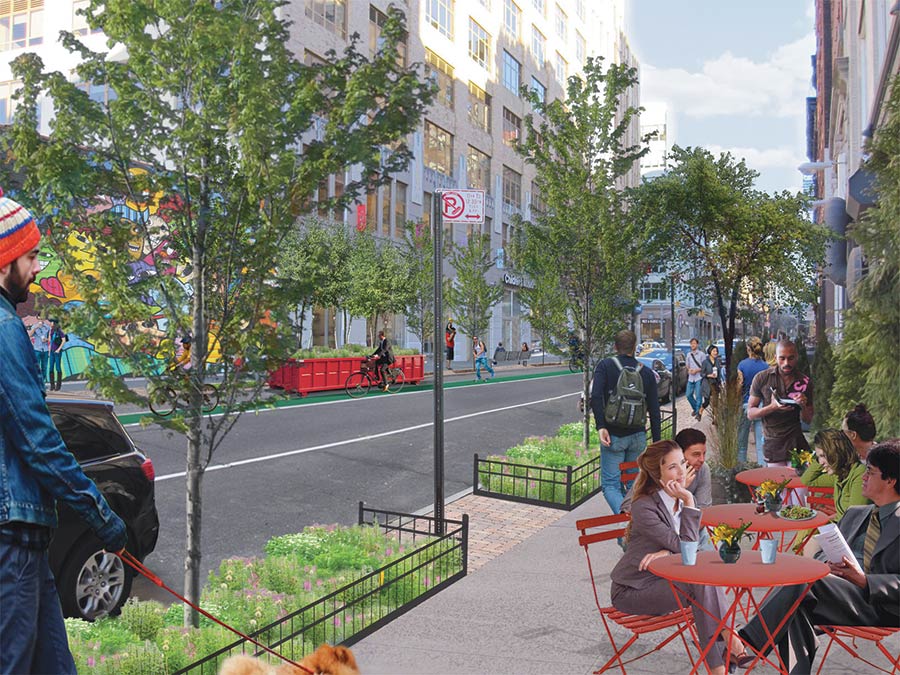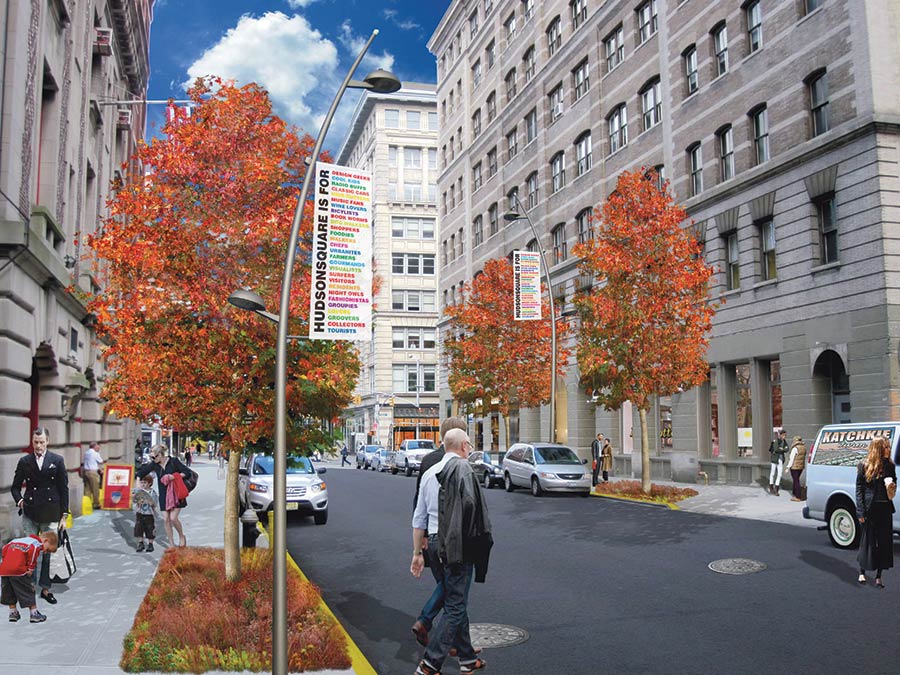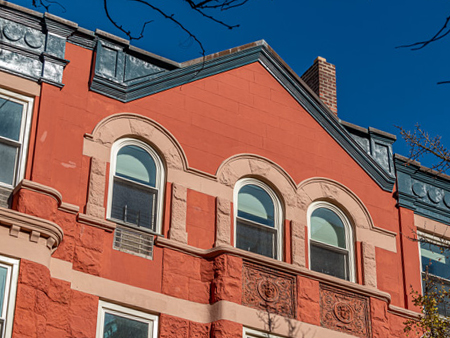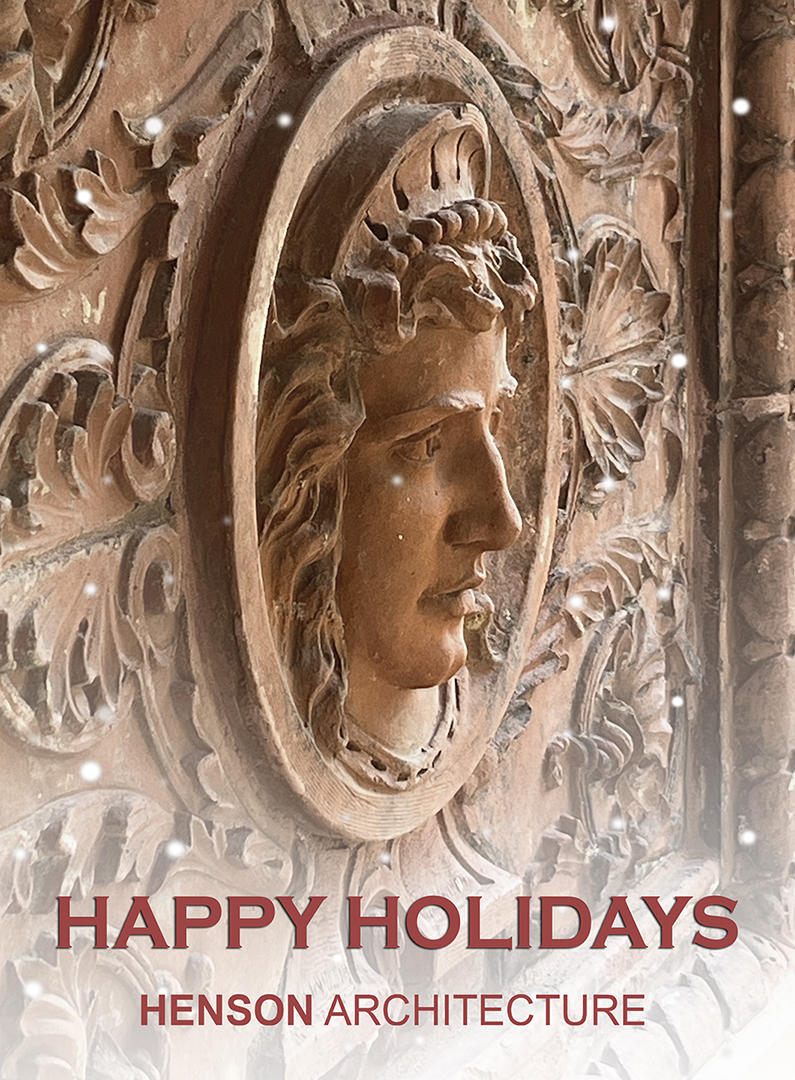Alex Ulam reports for The Architect’s Newspaper.
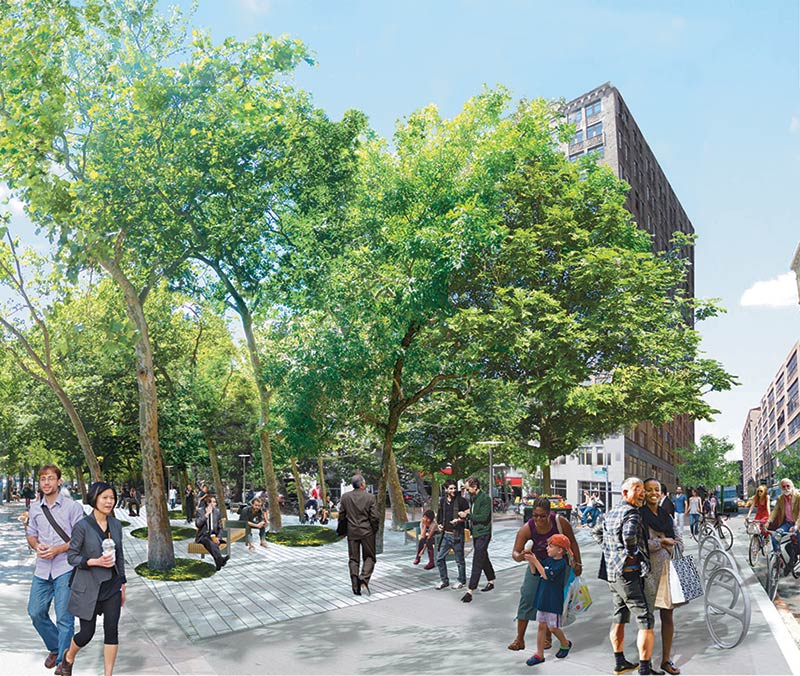
Chances are most New Yorkers don’t know where Hudson Square is located. But the launch of the first phase of a $27 million streetscaping initiative may turn relatively obscure neighborhood, bounded by the West Village, SoHo, and Tribeca, into one of the most attractive places in the city.
Plans call for the formerly industrial neighborhood to be completely redesigned with gantries festooned with public art, deployable dumpsters planted with trees, yellow gridded crosswalks, and special light fixtures designed by Thomas Phifer and Partners. Along with custom designed street furniture and new plantings, the neighborhood’s streets are slated to become some of the most sustainable in the city through the use of features such as permeable pavement and structural soil.
The plan to revamp the area is the brainchild of the Hudson Square Connection Business Improvement District (BID). The vast majority of BIDs throughout the city focus on sanitation and safety, but this one is unusual in that it is almost wholly oriented toward urban design and landscape.
“When we were formed the primary purpose was urban beautification because this area was already pretty clean and pretty safe,” said Ellen Bair, president of the Hudson Square Connection BID. “What it wasn’t was a neighborhood.”
Bair said that the plan’s adventuresome aesthetic and sustainability features reflect the sensibilities and the concerns of the young professionals who work in the creative industries—such as media, graphic design, and architecture—that form the majority of the more than 1,000 businesses located in Hudson Square. “This is a neighborhood where sustainability is in the DNA of the people who work here,” said Bair.
Phase one of the plan involves a $3.2 million contribution from the city and a $4.4 million contribution from the Hudson Square Connection BID. It will result in the planting of 360 trees throughout the neighborhood in specially designed tree trenches, larger than typical street tree pits, which will improve the neighborhood’s ability to retain stormwater. “Every year, we will soak up a minimum of eight swimming pools in terms of rainwater, and we will have healthier trees,” said Bair.
The next big move is the redesign of the gateway to the neighborhood, a large underutilized traffic island called Soho Square, at the corner of Sixth Avenue and Spring Street, with kidney shaped islands of green to increase permeable surfaces, custom seating, and lighter paving surfaces.
One big spur to the plan’s implementation was a residential rezoning that went through last March, which Bair hopes will increase the number of neighborhood residents. Dotted with parking lots and underutilized industrial buildings, the neighborhood is ripe for redevelopment. Some of the choicest real estate will be along Hudson Square’s western boundary, where the recently approved transferal of air rights from Hudson River Park may result in a wall of towers.
The Hudson Square Connection plan includes the largest district-wide use of state-of-the-art sustainable street features in the city. Nonetheless, it took four years to get approval from city officials. According to Signe Nielsen, principal at the landscape architecture firm Mathews Nielsen, who is leading a design team that includes Rogers Partners and ARUP, what really made the plan a slam-dunk was the flooding from Hurricane Sandy. “It became an easier sell after people saw the map of the extensive flooding,” she said.

